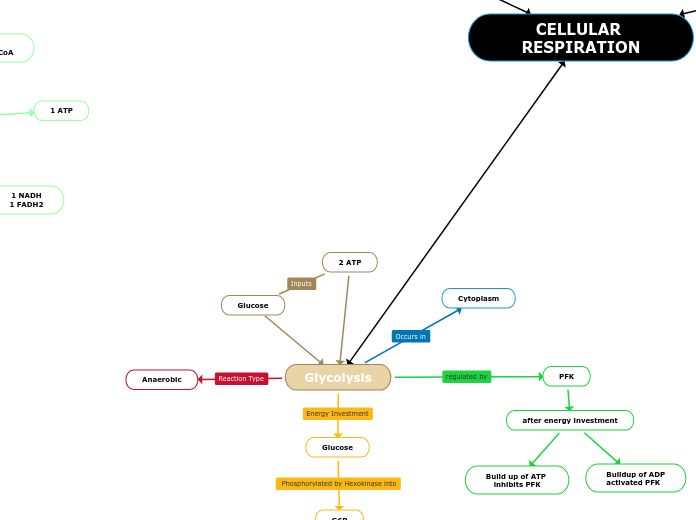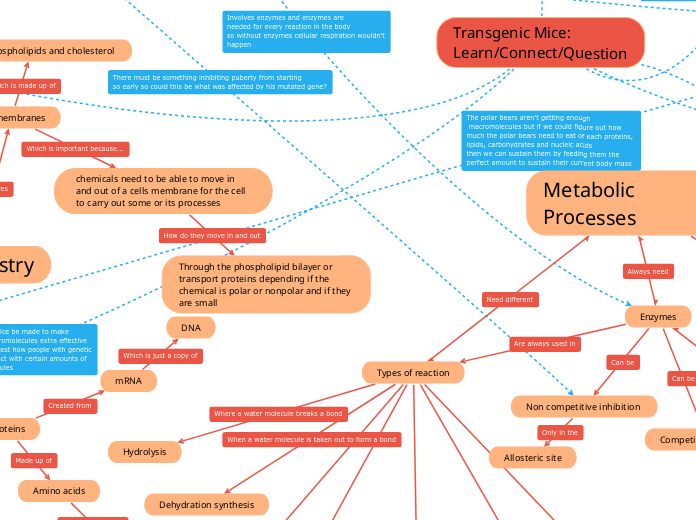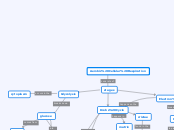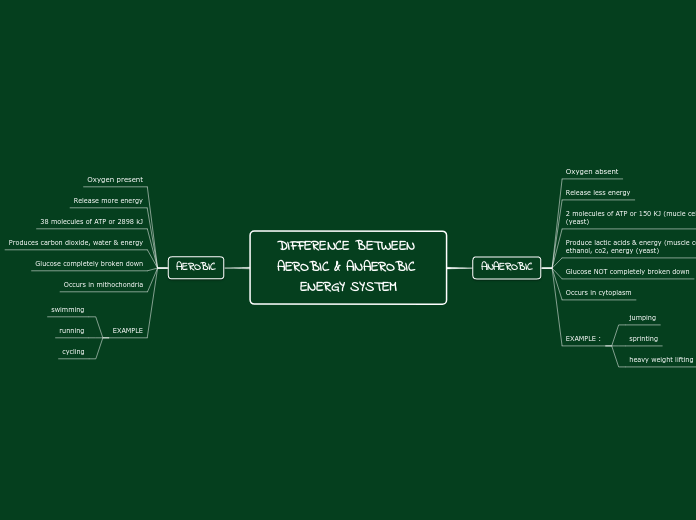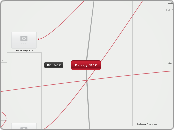Acetyl CoA
Oxaloacetate
STARTS AND
ENDS HERE
Citrate
Buildup of Citrate
inhibits PFK (stops it)
Isocitrate
a - Ketoglutarate
Succinyl-CoA
Succinate
ATP
Fumarate
Malate
H2O
FAD into FADH2
CoA
Coenzyme A is added
NAD+ into
NADH
CO2
CoA and H2O
NAD+ is reduced
into NADH
Pyruvate is decarboxylated
and CO2 is released
it now has 2 Carbons
Coenzyme A is attached
to make Acetyl CoA
Krebs Cycle
2 Cycle per Glucose
Products
2 FADH2
6 NADH
Oxidative Phosphorylation
FADH2
Accepts 2
protons
Accepts 2
electrons
2 Steps
Chemiosmosis
Final Step of
Cellular Respiration
Pumps protons from inner
membrane back down the (H+)
gradient which results in the
making of ATP through ATP
synthase.
ATP SYNTHASE
Transport
Protein
As protons move down
the gradient ADP is turned
into ATP.
Production of ATP
is called Oxidative
Phosphorylation
Electron Transport
Chain
Complex I
Intermembrane
Space
Complex II
Coenzyme Q
Complex III
Cytochrome C
Complex IV
Oxygen
Electronegative, Drives ETC.
Removes 2 electrons from
Complex IV and 2 Protons from
the matrix (this makes water)
FAD2
Goes through
Complex's 2, 3, 4
6 Protons
1.5 ATP
NADH
Goes through
Complex's 1, 3, 4
10 Protons
2.5 ATP
Delivery of Electrons
by NADH and FADH2
Electron Transfer
& Proton Pumping
Splitting of Oxygen
to form Water
Movement of
Electrons
Electrochemical
Gradient
NAD+ & FAD
Inner Mitochondrial
Membrane
4 CO2
Mitochondria
Matrix
F16BP
DHAP
Energy Harvesting
Pyruvate Oxidation
Pyruvate enters
Mitochondria
via transport protein
Cytoplasm into Matrix
Aerobic
4 ATP
2 Pyruvate
Fermentation
Lactate
Muscle Cells
Mainly in Animals
Lactate Dehydrogenase
Pyruvate converted
into lactic acid and energy
Pyruvate
Decarboxylase
Alcohol
Mainly in Plants
Alcohol Dehydrogenase
Microorganisms
Occurs in
Yeast
Pyruvate converted
into ethanol and CO2
2 Water
2 NADH
G3P
BPG
3PG
2PG
PEP
Pyruvate
2 ATP
Glycolysis
CELLULAR RESPIRATION
Alternatives to Glucose
Catabolism
Other Carbohydrates
Protein Catabolism
amino acids
through hydrolysis
can enter through
different stages
Occurs in Liver
Lipid Catabolism
triglycerides into glycerol
and fatty acids
enter mitochondrial matrix
undergo B-oxidation to become
acetyl-CoA
1 NADH
1 FADH2
1 ATP
12-C fatty acid could produce
6 Acetyl-CoA molecules
2 C acetyl group removed
binds with CoA to make Acetyl-CoA
2 glycerol molecules
can combine to form 2 things:
2 DHAP which then
turn into G3P
Factors affecting rate of respiration
Cycle is dependent on oxygen
needs it to drive the ETC (EN)
Higher Concentration = faster reaction rate
Will reach a point of saturation
where it will be at peak production
higher temp= faster reaction rates
PFK
after energy investment
Buildup of ADP
activated PFK
Build up of ATP
inhibits PFK
Cytoplasm
Glucose
G6P
F6P
Anaerobic
